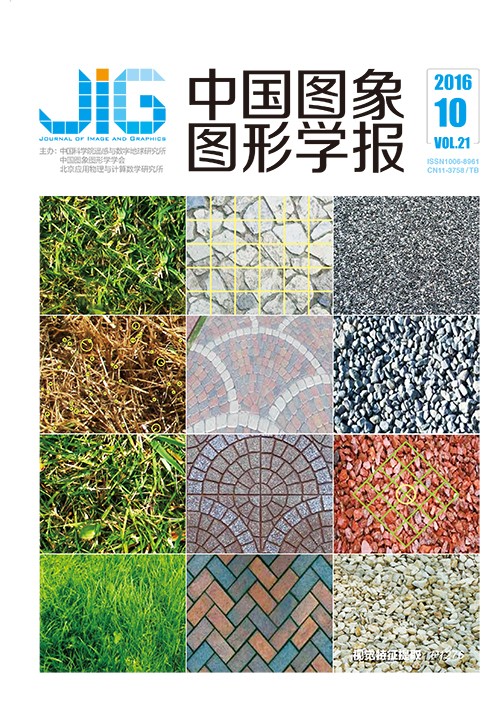
核空间中智模糊聚类及图像分割应用
摘 要
目的 为了更有效地提高中智模糊C-均值聚类对非凸不规则数据的聚类性能和噪声污染图像的分割效果,提出了核空间中智模糊均值聚类算法。方法 引入核函数概念。利用满足Mercer条件的非线性问题,用非线性变换把低维空间线性不可分的输入模式空间映射到一个先行可分的高维特征空间进行中智模糊聚类分割。结果 通过对大量图像添加不同的加性和乘性噪声进行分割测试获得的核空间中智模糊聚类算法提高了现有算法的对含噪声聚类的鲁棒性和分类性能。峰值信噪比至少提高0.8 dB。结论 本文算法具有显著的分割效果和良好的鲁棒性,并适应于医学,遥感图像处理需要。
关键词
Neutrosophic C-means clustering in kernel space and its application in image segmentation
Cui Xixi, Wu Chengmao(School of Automation, Xi'an University of Posts and Telecommunications, Xi'an 710121, China) Abstract
Objective To improve the neutrosophic C-means clustering performance on noise image segmentation of non-convex irregular data, neutrosophic C-means clustering in kernel space is presented. Fuzzy C-means clustering algorithm is widely used in image segmentation because of its simplicity. However, the fuzzy C-means clustering algorithm directly clusters pixel value of different location, which leads to huge sample number. Fuzzy C-means clustering algorithm does not consider spatial neighborhood information of pixels, and directly uses gray value of sample to make clustering result in poor anti-noise performance. In this study, to overcome the limitations of fuzzy C-means clustering algorithm, neutrosophic C-means set is introduced into traditional fuzzy C-mean clustering algorithm. The neutrosophic C-means clustering algorithm is advantageous to effective segmentation of noisy or singular data, and its result is good for boundary segments of the sample. Method The clustering algorithm of neutrosophic fuzzy C-means using Euclidean distance is not suitable for clustering of complex structured data. Thus, use of nonlinear function data samples are mapped to high-dimensional feature space and wisdom of fuzzy C-means clustering algorithm. Kernel function concept is introduced into the neutrosophic C-means clustering algorithm. By using nonlinear problem that satisfies Mercer condition, nonlinear transformation is used to map non-separable, linear input mode space of low-dimensional space to a separable, high-dimension, linear feature space. ntroduced the concept of kernel function.By using the nonlinear problem that satisifies the Mercer condition,The nonlinear transformation is used to map the liner non separable input pattern space of the low dimensional space of the low dimensional space to a first separable high dimension feature space. Kernel Hilbert space theory is a nonlinear function of samples that are mapped to high-dimensional feature space, changing data distribution characteristics and into its neutrosophic C-means clustering algorithm. This theory is proposed in the clustering algorithm of kernel space neutrosophic C-means. Result Numerous image segmentation experiments to compare the results found in kernel space, which is obtained by neutrosophic fuzzy clustering algorithm, improve the existing algorithm for clustering with noise robustness and classification performance. Salt-and-pepper, Gaussian, mixed, and multiplicative noise tests are conducted on four kinds of C-means clustering algorithms, namely, fuzzy, kernel fuzzy, neutrosophic, and kernel neutrosophic. Then, peak signal sizes to noise ratio of the four kinds of image segmentation algorithms are compared. Conclusion With different additives and multiplicative noises added to a large amount of image segmentation test, a new algorithm division has been proven to have a significant effect and good robustness, and its validity is verified.
Keywords
image segmentation fuzzy C-mean clustering neutrosophic C-means clustering kernel functions kernel spaces
|



 中国图象图形学报 │ 京ICP备05080539号-4 │ 本系统由
中国图象图形学报 │ 京ICP备05080539号-4 │ 本系统由